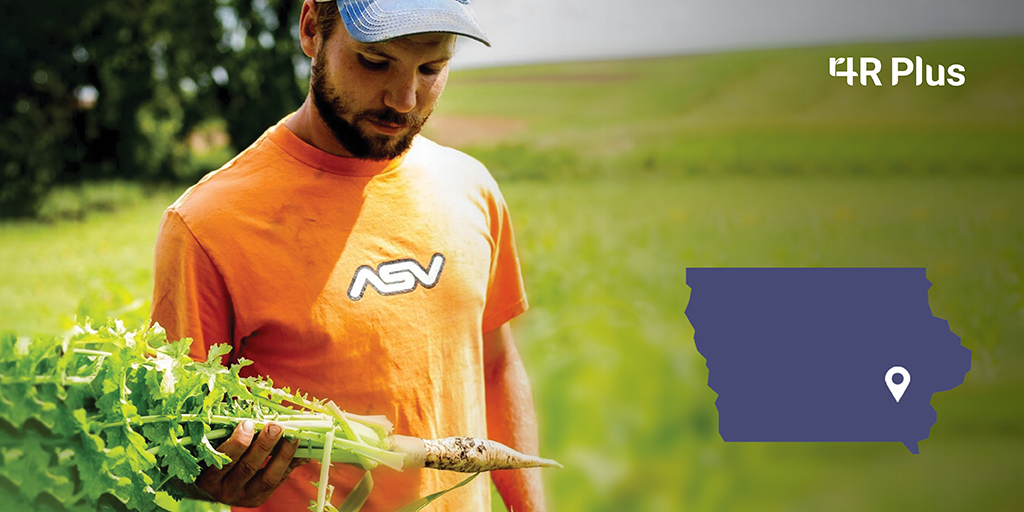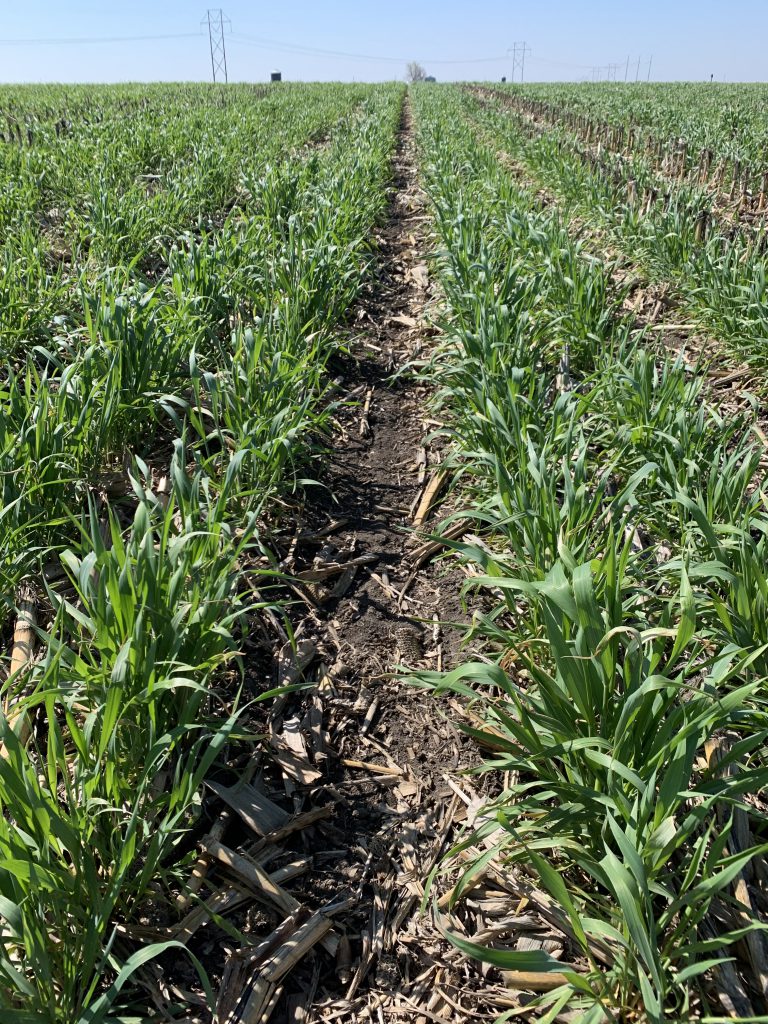
Michael Vittetoe’s father and grandfather started experimenting with no-till back in the 1980s to protect their Washington County soil from erosion. Soil conservation played a role in the switch, and Michael continues to fine-tune the system and sees additional benefits – like the time and fuel that’s saved by avoiding additional passes across fields.
“They also put in terraces and grass waterways on our rolling ground and good-sized buffer strips around the creeks,” Vittetoe added. “But instead of adding more terraces, we’ve increased cover crop acres because we believe they serve much the same purpose as terraces without having to build a structure.
“If you’re no-tilling and growing cover crops, even with rainy weather, your soil will be taking a lot of that water and infiltrating it down into the soil profile instead of letting it run off,” he added.
Building the confidence to increase cover crop acres

Nearly all the acres Vittetoe farms have rye cover crops. “We’ve been experimenting with rye for close to 10 years now. We’ve made plenty of mistakes and learned a lot to increase our confidence,” he said.
Now he’s seeing soil health and economic benefits accumulate. “Cover crops have allowed us to reduce our herbicide use by about 50% while providing more flexibility in the weed control programs we use,” he said.
Cover crops also provide flexibility in managing weather extremes and he’s ready for whatever weather Mother Nature throws at him this spring. “A couple years ago we were completely saturated in the fall and winter, and it was hard to get things dried out in the spring. In a scenario like that, you’re going to let the rye get big and soak up the excess moisture,” he said. “In a dry spring, you’ll terminate it earlier to save moisture.
“Last year we planted beans in May and didn’t terminate rye until the second week of June. It was cold and wet, so we just let the rye grow and soak up the excess moisture and keep the soil more fit,” he said.
On his corn ground, however, he likes to terminate the rye at planting time.
Increasing relay crop acres

In 2020, Vittetoe partnered with the Iowa Soybean Association and Multi-Cropping Iowa on an on-farm research trial relay cropping rye and soybeans, also known as multi-cropping. “We drilled rye in the fall on 10-inch twin rows. So, there’s two rows 10-inches apart and then a 20-inch gap in between the rye.
“I came back in the spring and planted 30-inch beans in the 20-inch gap between the rye rows. We let the rye mature and combined it off the top of the beans,” he continued. “We let the beans grow up over the top of the rye straw, then combined the beans.”
The result: Rye yielded 32 bushels per acre, which he binned, aerated, cleaned and used for seed. “We had about a 6.5-bushel-per-acre yield hit in the beans, but I think we can get that lower. Still, after penciling it out, this system ended up being about $75 per acre more profitable, at $10 beans,” Vittetoe noted. “We’re going to do it again this year on more acres.”
Fine-tuning nutrient management
Another goal for 2021 is improving nutrient management. He uses hog manure from his parents’ hog operation. “We put a lot of our fertility out in the fall ahead of corn. We’ve got good placement and good rates, but it’s not the best timing from a nutritional standpoint.
“Last year we side-dressed some hog manure on our corn in June. It’s logistically challenging, but it can be done. Instead of putting fertilizer out there eight months early, we’re applying it in season when the corn actually needs it. The crop uses it versus having it leach out and become someone else’s problem,” Vittetoe said.
Watch this video produced by Practical Farmers of Iowa in which Vittetoe (beginning at 19:00) shares his relay cropping experience.
Click here to ask Michael Vittetoe a question about the farming operation.
